#jim hughart
Explore tagged Tumblr posts
Photo

Joni Mitchell: Cour And Spark
GFS
Asylum SYLA 8756/OC 064 95090
Released: April 1974
#meine photos#vinylcollection#1974 music#joni mitchell#milt holland#david crosby#graham nash#wilton felder#jose feliciano#wiltn felder#wayne perkins#susann webb#robbie robertson#jim hughart#dennis budimir#chuck findeley#cheech and chong#may bennett#john guerin#larry cartlon#joe sample#vinylcommunity
2 notes
·
View notes
Text

Joe Pass – Resonance
Resonance is a live album by jazz guitarist Joe Pass, recorded in 1974 and released posthumously in 2000. Joe Pass – guitar Jim Hughart – electric bass Frank Severino – drums
3 notes
·
View notes
Text

新年最初の午後ジャズは「Warne Out」Warne Marsh '77
タイトルはworn out(使い古された)に引っ���けたものでしょう。ts、b、dsのコードレス・トリオで、you stepped out of a dream、it's you or no one、all the things等、スタンダードをテーマ無しでひたすらアドリブを聴かせる…丁度コニッツの「Motion」と同じ手法。(曲のタイトルは後で適当に付けてます)
トリスターノに「マーシュの最高傑作」と言わしめた内容で、高速であれスローであれ、どんなテンポでもアイディアが泉の様に湧き出る様は聴いててスリリングです。おまけに多重録音で自分自身とバトルもやっちゃってます。
この頃のマーシュは結構ピッチがヤバかったり、内容が散漫だったりで危険なので、YouTubeで聴いてから買う様にしています。そう言う意味ではこのアルバムは名作でしたが、中々店頭ではお目に掛かれずネットで漸く比較的安価で購入出来ました。CDだとボーナストラックが沢山入ってるので「買い」ですが、それも高くてレアです。
録音はベースのJim Hughartの自宅スタジオらしく、それほど良い音ではありませんが、音質を上回る出来です。マーシュの音色もこの時期にしては柔らかめで良い感じです。同時期録音のコニッツやエバンスとの「Crosscurrents」より遥かに良い出来だと僕は思います。

1 note
·
View note
Audio
Neanche un minuto di “non amore” by Lucio Battisti from the album Io tu noi tutti
#music#italian music#lucio battisti#mogol#dennis budimir#scotty edwards#scott edwards#scott g. edwards#jim hughart#james david hughart#ed greene#hal blaine#harold simon belsky#mike melvoin#giulio rapetti#michael melvoin#ray parker jr.#ray erskine parker jr.#dennis matthew budimir#dan ferguson#daniel clary ferguson
22 notes
·
View notes
Audio
Tom Waits - Foreign Affairs (1977)

http://www.tomwaits.com
#tom waits#usa#asylum records#foreign affairs#blues#jazz#rock#1977#1970s#shelly manne#george hurrell#bones howe#warner#bette midler#gene cipriano#bob alcivar#jack sheldon#frank vicari#jim hughart
4 notes
·
View notes
Video
youtube
Tom Waits - New Coat of Paint
#tom waits#new coat of paint#the heart of saturday night#jim hughart#pete christlieb#tom scott#jim gordon#bob alcivar#folk#blues#jazz#jazz rock#music#music is love#music is life#music is religion#raining music#70s#70s music
16 notes
·
View notes
Photo
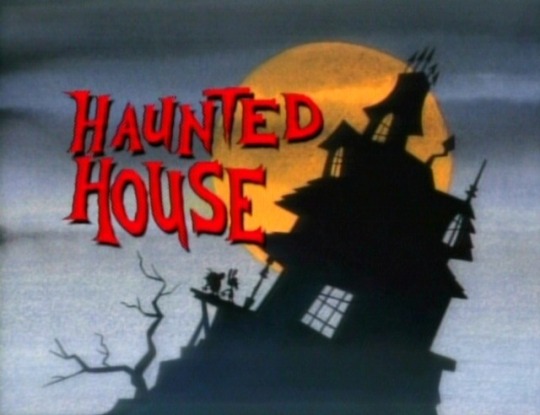
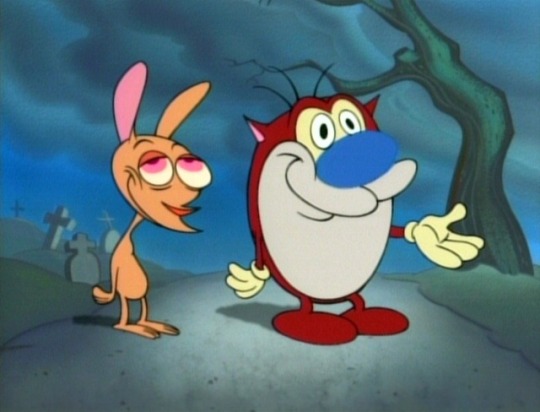
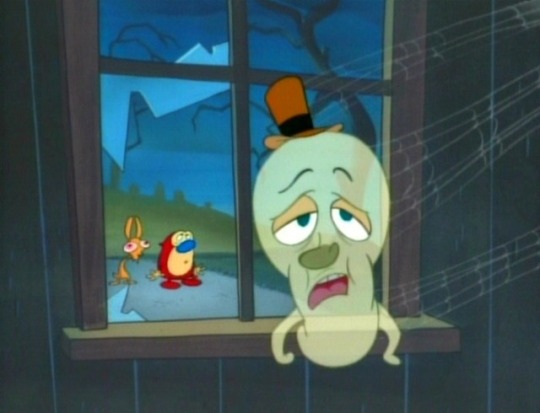
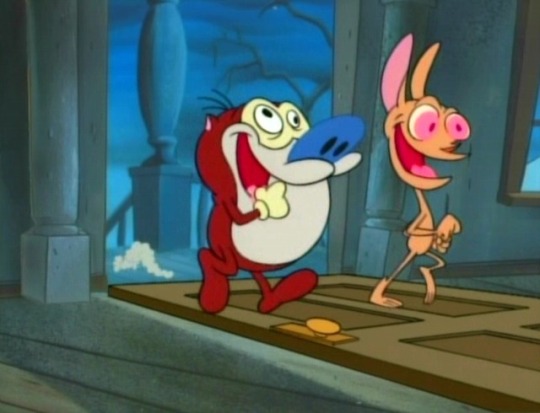

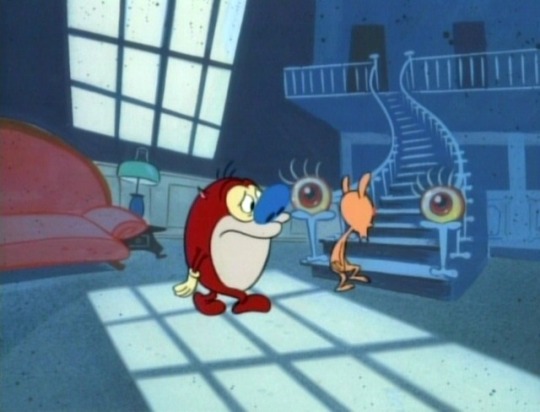

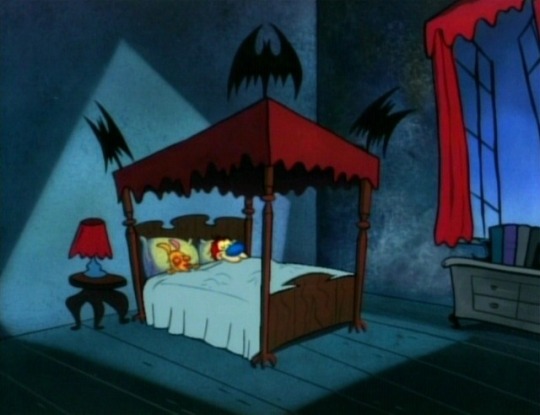
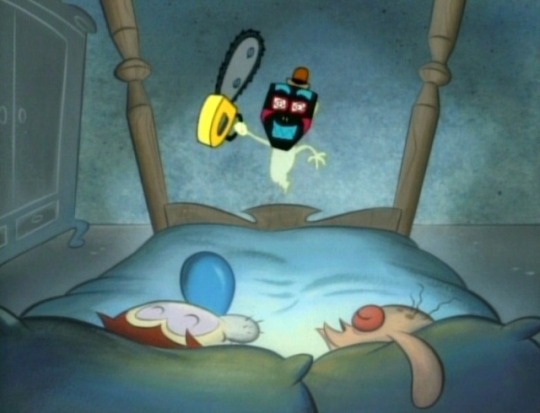
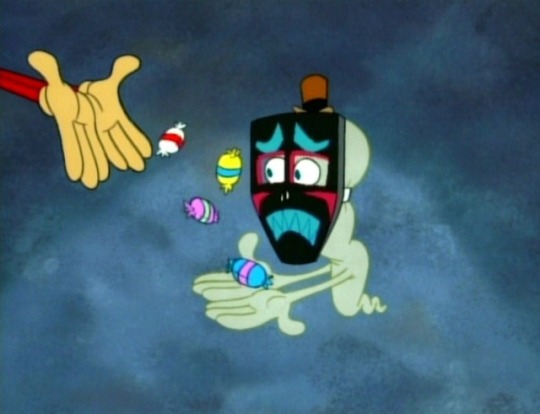
The Ren & Stimpy Show
#The Ren & Stimpy Show#Haunted House#Ron Hughart#Kelly Armstrong#John Kricfalusi#Bob Camp#Jim Smith#Richard Pursel
174 notes
·
View notes
Video
youtube
Nick Cave and The Bad Seeds’ live records are essential in the same way those by John Cale are – they show the development of a music outfit. The same can be said about Tom Waits’ concert LPs, particularly Nighthawks At The Diner. Actually, the latter resembles Sabotage/Live, i.e. it is a disc of original material, played in front of an audience. It is also noticeable for anticipating Small Change’s, hm, change of his persona, because Nighthawks At The Diner give us a glimpse of Tom Waits we all know, i.e. a ragged poet of the wasted and the wounded with that gravely voice of his. The fact that he presented this modification within a quasi-concert setting makes the introduction to this variation much better, because that figure just fits that location. You feel like you walked into a dingy bar, when you listen to this album’s tunes.
#tom waits#nighthawks at the diner#on a foggy night#mike melvoin#jim hughart#bill goodwin#pete christlieb#bones howe#70's music#jazz#live version
0 notes
Text
J.C. Heard & Bill Perkins Quintet – Live at the Lighthouse 1964 (Fresh Sound)
youtube
Dwelling on the amount of historic jazz that’s transpired in the absence of recording equipment can be a demoralizing and self-defeating exercise to any lover of the idiom. Countless hours of audio and countless bands are lost to the figurative sands of time, only enduring in the enthusiastic anecdotes of those who had the good fortune to be present with their ears and conservational with their memories. Even so, the supply that has survived, on reel-to-reel tapes, unreleased acetates, and other media, is an excellent tonic to counter the casualties. Live at the Lighthouse 1964 is a welcome entry in the second column, preserving as it does the partial performance of a crackerjack quintet that has no other extant aural evidence of its existence.
Drummer J.C. Heard is the erstwhile leader of the group, but saxophonist Bill Perkins gets co-credit on the strength of his contributions. Heard was a student of swing doyen Jo Jones, but also made his bones in bebop. He traded a flourishing career stateside for a three-year residency in Japan and hit a series of career snags upon his return. Fast forward to ’64 and the drummer decided to decamp to the Left Coast, looking up the Lighthouse, a premier jazz venue in the L.A. area and getting a gig from the proprietor on the spot. Heard put together a working quartet and several personnel changes later had installed Frank Strazzeri and Jim Hughart, both locals, on piano and bass. Guitarist Joe Pass sat in on the night in question and the tape machine was providentially rolling.
The affable program follows what was likely a typical set for the band, although two of the nine pieces included regrettably exist in incomplete takes. “Bob’s Blues” is truth in advertising with Perkins takes opening choruses before giving over to Strazzeri’s strolling solo. Heard hangs back with the rest of the rhythm section as Pass strums fat chords in the crevices. It’s hardly a memorable tune, but it serves a purpose in priming the audience for what’s to come. Perkins’ hoists baritone on the Billy Strayhorn ballad “Passion Flower” and another cerulean sortie, “Blues in Hoss’ Flat.” He’s equally agile on the big horn each context, coaxing a broad, grainy tone in phrasing further complemented by Strazzeri’s studied comping.
“There Will Never Be Another You” unfortunately cuts out prior to a conclusion while “Cute” commences mid-stream. What survives of each shows the quintet in winsome form with both Pass and Hughart making strong solo contributions on the latter. Heard’s from-the-stage announcements preface several pieces including a rollicking rendition of Oliver Nelson’s “Don’t Stand Up” that delivers a capsule class in the drummer’s ability to drive the band without erring into bombast. Perkins, on tenor, responds especially well to the stick-delivered incentives, burning through choruses with a celerity that rivals Pass’ hair-trigger plectrum.
Heard left L.A. the following year, eventually ending up permanently in Detroit. His docket remained reasonably full until his death in 1988. This snapshot of his comparatively short California sojourn, while flawed by the toll of time sits well with the rest of his recorded work in demonstrating why.
Derek Taylor
#j.c. heard#bill perkins#live at the lighthouse 1964#fresh sound#joe pass#jazz#los angeles#dusted magazine#albumreview#derek taylor
4 notes
·
View notes
Text
Book Recommendations: Da Big List, Fiction Edition
Well, I said I’d do more book recs, so here we go...
(note that some of the series recs are out of date, with additional installments written since I previously updated the list)
-Devil's Cape by Rob Rogers is the single best work of superhero prose I have ever read. -The Six-Gun Tarot by R. S. Belcher, in which the unusual inhabitants of a Wild West town (a sheriff who can't die, a deputy who's the son of Coyote, a housewife who used to be an assassin, and more) fight an Eldritch Abomination. Has two sequels, The Shotgun Arcana and The Queen of Swords -"Craft Sequence" series (six books and counting, starting with either Three Parts Dead or Last First Snow, depending on whether you want to read 'em in publication or chronological order, respectively), by Max Gladstone. Set in a modern-esque fantasy world that runs on corporate necromancy and "applied theocracy", the first (in publication order) involves a junior associate in a necromancy firm having to investigate the murder of the god who powers a steampunk city. -The Goblin Emperor by Katherine Addison, in which the half-goblin Unfavorite son of the Elven Emperor is unexpectedly raised to the throne after his father and half-brothers die in a zeppelin crash. -Daughter of the Sword by Steve Bein, in which a Tokyo policewoman catches a case that involves a Yakuza power struggle and a trio of magic swords, with extensive flashbacks (as in, they ultimately take up about half of the book) to the history of said swords. Has a sequel, Year of the Demon, in which the heroine goes up against a cult revolving around a mask tied to the swords. Also, more flashbacks. Now has a third sequel, Disciple of the Wind; there are also a couple of eNovellas, which I haven't read. -Eifelheim by Michael Flynn, in which a Renaissance-era village in Germany interact with a group of aliens whose ship crashed nearby. -Ancillary Justice by Ann Leckie, in which the last remnant of a space warship's AI seeks revenge on the ones who blew up the rest of her and...find out why they did it. Has two sequels, Ancillary Sword and Ancillary Mercy. -The Chinatown Death Cloud Peril by Paul Malmont, in which the creators of Doc Savage and The Shadow team-up with each other (and L. Ron Hubbard and someone else who is a minor spoiler) on an actual pulp adventure involving Nazi spies, a Chinese warlord, and something which is actually a BIG spoiler. Has a sequel, The Astounding, the Amazing, and the Unknown, in which Isaac Asimov, Robert Heinlein, and L. Sprague De Camp investigate Tesla's final invention. -Bridge of Birds by Barry Hughart, in which Master Li, a sage "with a slight flaw in his character", is hired by an immensely strong peasant named Number Ten Ox to investigate a mysterious plague afflicting his village in a "China that never was". Has two sequels, The Story of the Stone and Eight Skilled Gentlemen that are greatly inferior but still enjoyable. -The Kitty Norville books by Carrie Vaughn (15 books starting with Kitty and the Midnight Hour; the count includes a short-story collection and a side-novel starring a secondary character), about the host of a midnight radio show in Denver, who is also a newly turned werewolf. One night, instead of playing random music, she starts talking about the supernatural. Then vampires and other werewolves start calling in... -The Inspector Chen novels by Liz Williams (6 books starting with Snake Agent), about a police detective in a near future Singapore who investigates mysteries that require him to liaise with the Chinese versions of Hell and Heaven. -"Barsoom" series by Edgar Rice Burroughs (11 books, starting with A Princess of Mars): The ur-text of the Planetary Romance sub-genre, one of the definitional texts of soft SF. Rollicking adventures with epic characters in a marvelously imagined world. Long story short; a Civil War vet on the verge of death is astrally projected to not-yet-dead Mars, befriends a group of warlike natives, falls in love with the Princess of another, and turns the whole planet upside down in the name of love. Then he has kids... -"Lensman" series by E. E. "Doc" Smith (6 books; starting with either Triplanetary or Galactic Patrol, depending on your preferences): The granddaddy of all Space Operas, a triumphant example of power creep. The forces of Order and Chaos war for the fate of the universe, using the ultimate police force and an army of space pirates as proxies. -Last and First Men by Olaf Stapledon: An exploration of the future evolution of mankind. Starting in the '30s with the then-current state of the "First Men" (that is to say, Homo sapiens sapiens) until the extinction of the "Last Men" millions of years hence. Redefines epic scope. -Star-Maker by Olaf Stapledon: A companion of sorts to Last and First Men, except with with the scope turned up to eleven, covering billions of years and the entire universe. -Slan by A. E. Van Vogt: Jommy Cross is a Slan, an evolved human possessed of superior physical and mental abilities. Years ago, the Slans took over the world, but their regime was overthrown and now the Slans are hunted. When Jommy's parents are killed, he must learn to survive in a world that hates and fears him...or does it? Jampacked with twists and turns, not to mention being the archetypical "mutant hunt" novel. -Voyage of the Space Beagle by A. E. Van Vogt: The best and brightest of man's scientific minds have been sent into space to explore strange new worlds, and then figure out how to keep the life-forms they encounter from killing them. A rip-roaring tale of of space exploration, alien monsters, and an omnicompetent protagonist. Not only was it a major influence on Star Trek, one episode is the basis for Alien. -"Demon Princes" series by Jack Vance (5 books starting with The Star King): Years ago, the five most dangerous criminals in the known universe joined together to murder or enslave the inhabitants of a small colony. Now the sole survivor is hunting them down one-by-one across the galaxy... The narrative is a great combination of action and mystery, and the setting is full of all manner of interesting worlds and civilizations. -"Planet of Adventure" series by Jack Vance (4 books, starting with City of the Chasch): An Earthman crash-lands on a planet inhabited by four alien species, and the humans they've enslaved, travels the world to find a way home. A marvelous exploration of the concept of Blue-And-Orange Morality. -"Sector General" series by James White (12 books, starting with Hospital Station): Life aboard a massive, multi-species hospital space station in a deeply idealistic 'verse with one of the most diverse bunch of aliens ever devised. The first six books are mostly collections of short stories featuring medical mysteries solved by Dr. Conway (the primary exception is the second book, which is mostly a novella set against the backdrop of an interstellar war and brilliantly inverts the "Hard Man Making Hard Decisions" trope), as he goes from being a trainee to one of the hospital's elite, while the latter six are novels featuring an assortment of characters. -"Cobra" series by Timothy Zahn (9 books and counting, starting with Cobra): A multi-generational tale of super-soldiers in war and peace, with a healthy helping of interstellar diplomacy. A really interesting take on MilSF, where out-of-the-box thinking takes center stage. -"Quadrail" series by Timothy Zahn (5 books, starting with Night Train To Rigel): Frank Compton, former agent of the human government, finds himself working for the mysterious aliens who run the local 'verse's sole form of interstellar travel; a train in space called the Quadrail. Intrigue, action, and plot twists abound, including one of the best Heel Face Turns I have ever encountered. -"Stainless Steel Rat" series by Harry Harrison (11 books, starting with The Stainless Steel Rat, and one short story, which can be found in the collection Stainless Steel Visions). In a far future where mankind has spread across the stars, crime has been eliminated. Well, that's what the authorities would like you to believe; in truth there are still a small handful of individuals maladjusted enough to commit crimes and smart enough to get away with them. James Bolivar "Slippery Jim" Digriz, the Stainless Steel Rat, may be the smartest of them all, a white collar thief and con artist who's almost pathological disregard for law and authority is balanced by a surprisingly strong moral code. Which is why when he is finally caught, the authorities put him to work catching criminals who lack those morals. This is classic SF comedy, with a surprising amount of pathos at points. -"The Parasol Protectorate" series by Gail Carriger (five books, starting with Soulless). A humorous and exciting tale of love, intrigue, mad scientists, and fashion in an alternate Victorian era where the British Empire's power derives from steampunk technology, werewolf soldiers, and vampire politicians. Has a sequel series, "The Custard Protocol" (3 books and counting, starting with Prudence) revolving around the daughter of the original protagonist. Has a YA prequel spinoff, "Finishing School" (4 books, starting with Ettiquette and Espionage) revolving around a teenager who is recruited by a boarding school that trains spies. There are, in addition, a manga adaptation of the first couple books. -Ports of Call by Jack Vance. Myron Tany has always dreamed of traveling the Gaean Reach. When his eccentric aunt acquires a spaceship, it seems his dream has come true...until she ends up marooning him on random planet. Fortunately, Myron is able to obtain a position as supercargo aboard the merchant ship Glicca. The story does not really have a plot per se, consisting primarily of a series of marvelous picaresque vignettes as Myron and his crew-mates travel to different worlds delivering cargo, trying to acquire additional cargo, and periodically running afoul of bizarre local customs. The book just kinda stops at one point, and resumes in a second book, entitled Lurulu. I'm not really describing this well, but they're both very fun, beautifully written books. -The Green and the Gray by Timothy Zahn. A night on the town for a young New York couple takes a turn for the weird when they are forced, at gunpoint, to take custody of a 12-year old girl. They soon find themselves enmeshed in a secret Cold War between two alien races that have secretly been living in the city for generations...a Cold War that is threatening to turn hot. -The Rook by Daniel O'Malley. A young woman awakens surrounded by corpses with no memory of who she is. In her pocket is a letter from her pre-amnesia self, one Myfanwy Thomas. It seems that Myfanwy was a senior bureaucrat for the covert organization in charge of controlling magic and other such weirdness in Britain, and that her amnesiac state is something that was done to her. Myfanwy must therefore investigate the mystery of precisely who that is, while simultaneously do a job about which she knows nothing, without letting anyone realize what's happened to her. Ha a sequel, Stiletto, though I cannot explain the plot without spoiling the previous book. -Throne of the Crescent Moon by Saladin Ahmed. A tale in which an elderly demon-hunting cleric and his paladin assistant team-up with a shape-shifting barbarian girl and husband and wife alchemists to prevent an undead villain unleash an ancient evil, while trying not get involved between the conflict between the tyrannical ruler of their city and a gentleman thief-turned-revolutionary. Did I mention that the cleric's spells invoke the name of Allah, the paladin is a dervish, the barbarian is a Bedouin, and the whole setting draws it's cues not from Tolkien but the Arabian Nights? -"White Trash Zombie" by Diana Rowland (6 books and counting, starting with My Life As a White Trash Zombie). Angel Crawford is an unemployed high school dropout in rural Louisiana with a deadbeat dad, an asshole boyfriend, a drug habit, and no future. After one particularly wild night of drinking and drugging, she gets into a devastating car accident...and wakes up in the hospital without a scratch on her to find that an unknown benefactor has arranged for her to have a job at the Coroner's Office. Which is good because she now has a hankering for brains... -Under the Moons of Mars: New Adventures on Barsoom edited by John Joseph Adams. Exactly what is says on the tin, a collection of original stories set on Barsoom by an assortment of writers. As with any anthology, quality is a bit uneven; some of the stories are excellent Original Flavor pastiches, some are deconstructions or parodies, one or two are just bad. But all in all a great collection. -Worlds of Edgar Rice Burroughs edited by Mike Resnick and Robert T. Garcia. Same basic idea, but for the entire Burroughs oevure, including some of his non-SFnal work. -"Winter of the World" series by Michael Scott Rohan (two trilogies, the first starting with The Anvil of Ice, the second place taking place before the first and in another part of the world, and which I haven't been able to get my hands on ), an epic fantasy taking place against the backdrop of an Ice Age, in which a young man rises from slavery to become the most powerful smith-cum-magician the world has ever known, and together with some companions fights to defeat the sinister primal forces that wish to cover the world in glaciers forever. Much less generic than it sounds, even without going into the appendixes which reveal the real(ish) science behind quite a bit of the magic. -"Spiral Arm" series by Michael Flynn (4 books, starting with The January Dancer). Moderately Irish-flavored space opera, the first book tells the tale of of how a random space captain found a pre-human artifact, of the various hands said artifact passed into, and the conflicts that sprung up in it's wake. The second book turns the first's framing sequence into an epic of it's own, as a young bard hunts down the truth of her parentage. The series notably involves massive retcons with each volume, revealing that what we thought was going on was actually something else, but does so in a way that's compelling rather than irritating. -Dr. Jay Hosler is an entomologist who has written four edutational graphic novels for children (Clan Apis, The Sandwalk Adventures, Optical Allusions, and Last of the Sandwalkers). I've read three and they are amazing. In Clan Apis, a young honeybee desperately searches for her place in the hive, and ultimately finds an unorthodox solution. In The Sandwalk Adventures, an elderly Charles Darwin tries to convince a follicle mite living in his eyebrow that he's not God, by teaching him about evolution. In Last of the Sandwalkers (no relation)...honestly, the story contains so much epic awesomeness, I just want to list it, but it's all spoilers; suffice to say that the title character is A: a beetle, B: could give Sam Carter and Agatha Heterodyne a run for their money in the mad science department, and C: leads an expedition to explore the unknown and along the way discovers truths about her family and the nature of her people's civilization that some people really don't want her to (also you learn stuff about beetles). -Nightwise by R. S. Belcher. Years ago, Laytham Ballard was the Golden Boy of the occult underworld sub-culture. That was a LONG time ago, and no one would ever mistake Laytham for golden. But he's not so much of a bastard that he'll refuse the last request of one of his few remaining friends. What was supposed to be a simple revenge killing, however, turns out to be a lot more complicated and a lot more dangerous than Laytham ever imagined. Has a sequel, The Night Dahlia, which I have yet to read. -Brotherhood of the Wheel by R. S. Belcher. Jimmy Aussapile is an independent trucker, hauling cargo cross-country to support his pregnant wife and teenage daughter; he is also a member of a secret order descended from the Knights Templar that protects the highways of America from monsters both human and not. An encounter with a hitchhiking ghost finds him heading off on a quest, in which he joins forces with the heir apparent of monster-fighting outlaw biker gang who's military service unleashed some serious inner demons, and a State Trooper who's determination to solve a series of child abductions leads her to go rogue. Together, they must battle an ancient evil involving serial killers, human sacrifice, and Black-Eyed Kids. Note that it's loosely tied to Nightwise, in which Jimmy shows up in one scene as a minor side character; meanwhile, an off-hand reference to Laytham is made at one point in Brotherhood, and a minor plot thread in the later novel relates to a major plot thread in the earlier. They aren't even the same genre, with Nightwise being urban fantasy noir instead of horror. All in all, one doesn't have to have read one to enjoy the other,
3 notes
·
View notes
Photo

Tom Waits | Small Change
Tom Waits’ third album utilizes both a small group consisting of saxophonist Lew Tabackin, bassist Jim Hughart, and drummer Shelly Manne, and an orchestra, to provide a lush and personal element to his music. By this album (the third of his discography), Waits seems to have fully arrived in his persona of a drifter/carnival barker/sad drunk, his voice fully ground into the smoke and dust so associated with his sound, and any bit of optimism or idealism in his lyrics tempered with gritty realism and visceral imagery. Tom Waits succeeds so strongly for me becaus ehe manages to combine gritty and downtrodden lyrics (as well as a gritty and downtrodden voice) with lyrics and instrumentation that suggest there is still some hope to be had in a way that is intensely believable. Tom Waits is a guy who inhabits a character so powerfully that it permeates every part of his music, and this album captures that character thoroughly, in all of his moods and states. Tom Traubert’s Blues is its most romantic and yearning, Step Right Up and Pasties and A G-String at its seediest and creepiest. In addition to Waits’ beautiful ballads, though, this album also features some of his excellent beat poetry, as on tracks like Step Right Up, The One That Got Away, and the title track. I’d say this album is about 75% in the Crooner Tom Waits tradition and 25% in the experimental noisy weird Tom Waits tradition, but I think it’s a very easy and enjoyable transition to listen to. This album is really good.
3 notes
·
View notes
Text

Joe Pass – Summer Nights
Summer Nights is an album by jazz guitarist Joe Pass that was released in 1990.
Joe Pass – guitar John Pisano – guitar Jim Hughart – bass Colin Bailey – drums
0 notes
Video
Pat Williams – And On The Sixth Day
Capitol Records – ST-11242 – Released in 1973. Pat Williams – Threshold. Bass – Jim Hughart. Cello – Gloria Strassner. Drums – John Guerin. Guitar – Dennis Budimir, Larry Carlton. Harmonica – Tommy Morgan. Horns – Alan Robinson, Gale Robinson, Jim Decker, Gus Klein. Keyboards – Mike Melvoin. Percussion – Larry Bunker. Trombone – Bill Byers, Chauncey Welsh, Ken Shroyer. Trumpet – Buddy Childers, Marvin Stamm. Tuba – Tommy Johnson. Viola – David Schwartz, Milton Thomas. Violin – Jerry Vinci, Jacob Krachmalnick, Jimmy Getzoff. Flute, Tenor Saxophone, Woodwind – Tom Scott Trumpet – Marvin Stamm.
9 notes
·
View notes
Text
Álbum Brasil - Documentação
youtube
Lançamento: 1981;
Artistas: João Gilberto, Caetano Veloso, Gilberto Gil, Maria Betânia;
Gênero: MPB, Bossa Nova;
Gravadora: Warner Music Group;
Formatos: Disco de Vinil em formato LP (lançado em 1981) e CD (lançado em 1987);
Músicas:
“Aquarela do Brasil”
Compositor: Ary Barroso;
“Disse Alguém”
Compositores: Haroldo Barbosa, Gerald Marks e Seymour Simos;
“Bahia com H”
Compositor: Denis Brean;
“No Tabuleiro da Baiana”
Compositor: Ary Barroso;
“Milagre”
Compositor: Dorival Caymmi;
“Cordeiro de Nanã”
Compositor: Dadinho, Mateus.
Créditos:
Gravado em: Estúdios da SIGLA e Sound Good Music;
Mixado por: Estúdios da SIGLA e Westlake Audio;
Publicado por: Irmãos Vitale, SEMBRA e Berna Music, Inc.
Direção: João Gilberto;
Produtores executivos: André Midani, Guto Graça Mello e Krikor Tcherkesian;
Produtor: João Gilberto;
Maestro: Johnny Mandel;
Vocais e violão: João Gilberto;
Vocais: Caetano Veloso, Gilberto Gil e Maria Betânia;
Baixo: Jim Hughart;
Violoncelos: Anne Goodman e Rober Lebon;
Bateria: Joe Correro;
Flautas: Bud Shank, Eddie Cainf, Glen Garrett e Harry Klu;
Harpa: Stella Castellucci;
Teclado: Clare Fischer;
Percussão: Paulinho da Costa;
Violas: David Schwartz, Helaine Wittenberg e Marilyn Baker;
Spalla: Gerarld Vinci;
Violinos: Bonnie Douglas, Harry Bluestone, Isabelle Daskoff, Israel Baker, Jerry Reisler, John Wittenberg, Joseph Goodman, Nathan Ross, Paul Shure, Robert Dubow e Robert Lipsett;
Diretor de arte, design: Rogério Duarte;
Coordenadora nos EUA: Julie Sayers;
Engenheiros (gravação), mixado por: Celio Martins, Joel Moss;
Engenheiros (assistente): Eduardo Remalho, Russ Bracher;
Fotografia: Rogério Sganzerla.
0 notes
Video
youtube
Boz Scaggs -Slow Dancer
#boz scaggs#slow dancer#slow dancer album#david walker#dennis coffey#greg poree#jay graydon#clarence mcdonald#jerry petters#james jamerson#jim hughart#ed greene#james gadson#joe clayton#king errison#carolyn willis#hulia tillman waters#lrona willard#myrna matthews#pat henderson#rock#pop rock#blue-eyed soul#music#music is love#music is life#music is religion#raining music#70s#70s music
12 notes
·
View notes
Text
Patrick Rothfuss Recommendations
The Dresden Files by Jim Butcher
The Last Unicorn by Peter S. Beagle
Something Wicked This Way Comes by Ray Bradbury
Stranger in a Strange Land by Robert Heinlein
Lord of the Rings by J.R.R. Tolkien
The Chronicles of Narnia by C.S. Lewis
Dragonriders of Pern by Anne McCaffrey
Dune by Frank Herbert
Do Androids Dream of Electric Sheep? by Philip K. Dick
Discworld by Terry Pratchett
The Chronicles of Amber by Roger Zelazny
Brave New World by Aldous Huxley
A Wizard of Earthsea by Ursula K. Le Guin
The Sandman by Neil Gaiman
The Fisher King Trilogy by Tim Powers
Hitchhiker’s Guide to the Galaxy trilogy by Douglas Adams
The Riddlemaster of Hed series by Patricia McKillip
Dream Quest of Unknown Kadath by H.P. Lovecraft
Neuromancer by William Gibson
Cat’s Cradle by Kurt Vonnegut
1984 by George Orwell
Callahan’s Crosstime Saloon by Spider Robinson
A Midsummer Night’s Dream by William Shakespeare
The Chronicler of Master Li and Number Ten Ox by Barry Hughart
The Princess Bride by William Goldman
The Bloody Chamber by Angela Carter
Gun, with Occasional Music by Jonathan Lethem
The Odyssey by Homer
The Last Herald-Mage tirlogy by Mercedes Lackey
Ender’s Game by Orson Scott Card
River World Series by Phillip Jose Farmer
One Thousand and One Nights
Riftwar Saga by Feist
The Dark Tower Series by Stephen King
Memory, Sorrow, and Thorn by Tad Williams
Belgaraiad series by David Eddings
Snow Crash by Neal Stephenson
The Neverending Story by Michael Ende
The Dragonlance Chronicles by Margaret Weis and Tracy Hickman
The Shannara Trilogy by Terry Brooks
The Farseer Trilogy by Robin Hobb
Gargantua and Pantagruel by Francois Rabelais
Only Forward by Michael Marshal Smith
A Canticle for Leibowitz by Walter M. Miller
Christopher Moore books (?)
Time Enough for Love by Robert Heinlein
Stardust by Neil Gaiman
His Dark Materials by Phillip Pullman
Black Company series by Glen Cook
Shades of Grey by Jasper Fforde
Lud in Mist by Hope Mirrlees
The Red Magician by Lisa Goldstein
Old Man’s War by John Scalzi
A Wrinkle in Time by Madeleine L’Engle
Death Is a Lonely Business by Ray Bradbury
Declare by Tim Powers
Legend by David Gemmel
Icewind Dale trilogy by R.A. Salvatore
Harry Potter by J.K. Rowling
Beowulf
The Doomsday Book by Connie Willis
Fafhrd and Gray Mouser books by Fritz Leiber
Watership Down by Richard Adams
The Gormenghast series by mervyn Peake
Day of the Triffids by John Wyndham
The Glass Book of the Dream Eaters by Gordon Dahlquist
A Song of Ice and Fire by George R.R. Martin
The Forever War by Joe Haldeman
House of Leaves by Mark Z. Danielewski
The Mote in God’s Eye by Larry Niven and Jerry Pournelle
Nova by Samuel R. Delaney
Dhalgren by Samuel R. Delaney
The Uplift Trilogy by David Brin
The Hollows series by Kim Harrison
The Fionavar Tapestry by Guy Gavriel Kay
The Vorkosigan Saga by Lois McMaster Bujold
The Left Hand of Darkness by Ursula K. Le Guin
Conan by Robert E. Howard
Little, Big by John Crowley
Lensman Series by E.E. “Doc” Smith
Malazan Books of the Fallen by Steven Erikson
Wheel of Time by Robert Jordan and Brandon Sanderson
Tripod Trilogy by Samuel Youd
Flatland by Edwin A. Abbott
Howl’s Moving Castle by Diana Wynne Jones
1 note
·
View note